As you learn more and more about tennis, you’ll begin to understand different types of tennis courts give each court its own distinct appearance and style of play.
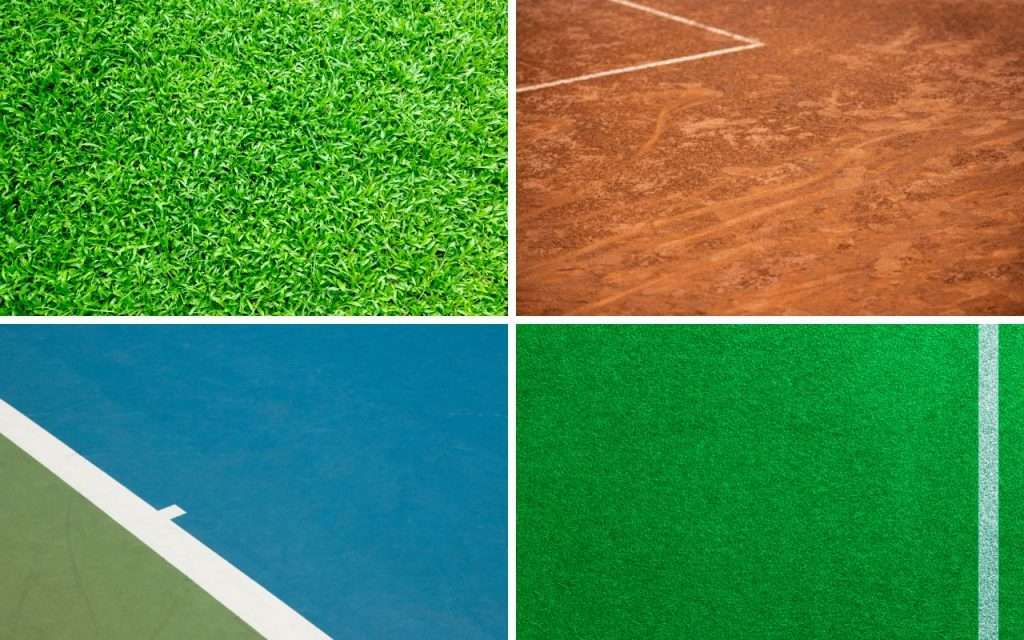
Read on to learn more about these 4 types of tennis courts with their pros and cons, so you know what to look for next time you need to find somewhere new to play.
Table of contents
- Grass Courts
- Clay Courts
- Hard Courts
- Carpet and Synthetic Courts
- Tennis Court Surfaces Comparison
- Tennis Court Dimension
Grass Courts
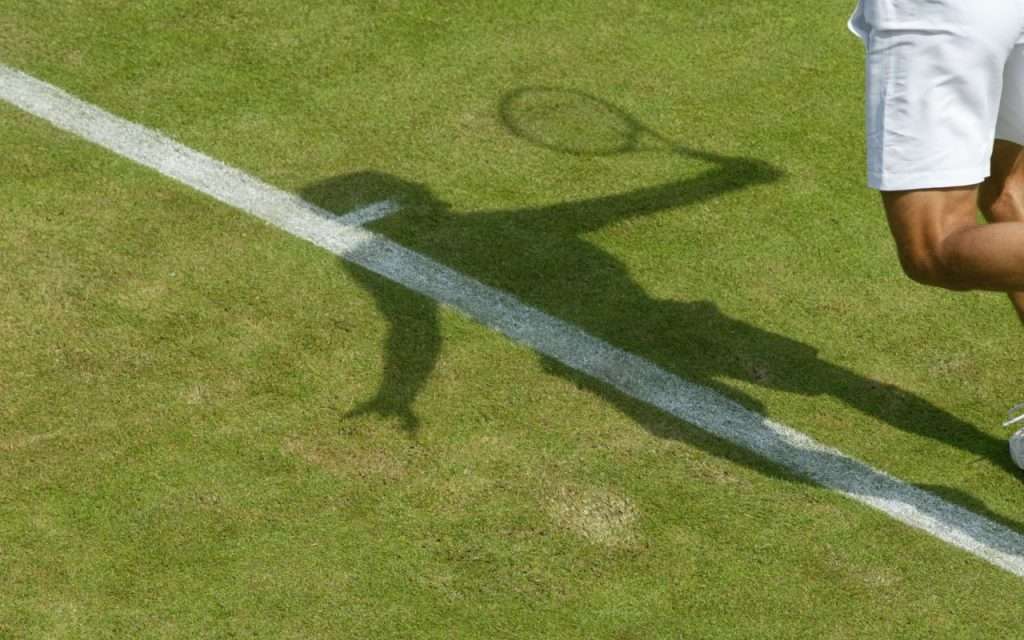
Grass courts are the most traditional tennis courts since 1877. A grass surface consists of short-cut grass on tightly packed soil, which requires regular maintenance to keep the courts in tip-top condition.
With the decline in popularity of the courts with this surface, Wimbledon is the last grass court that held professional tournaments to this day.
The grass surface is slippery which makes the ball bounce faster and lower to the ground. It generally keeps the rallies relatively short, and players with stronger serve-and-volley skills will generally perform better.
Players like Roger Federer, Pete Sampras, Serena Williams, Margaret Court and Billy Jean King have excelled on grass courts.
Pros:
- Soft playing surface
- Allows sliding during play
- Cooler surface
Cons:
- High maintenance
- Need to be careful with overplaying
- Only green color available
- Not suitable on rainy days
Clay Courts
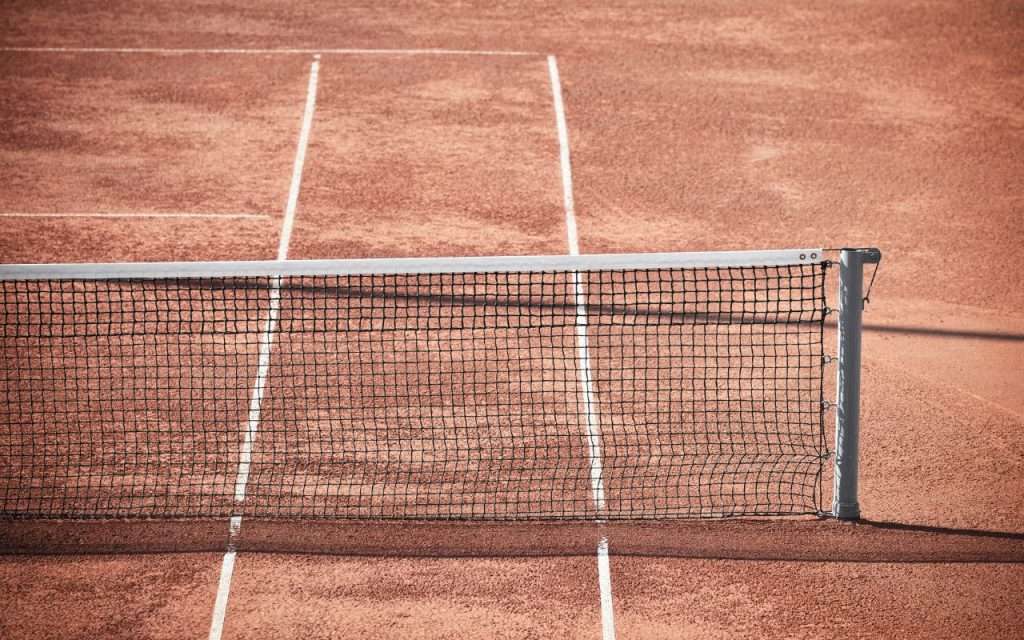
Clay courts are made of crushed shale, stone, or brick. They’re popular in Europe and Latin America. One of the most famous clay court tournaments in the world is the French Open.
Clay courts slow down the ball and produce a slow and high bounce compared to the other surfaces. This surface takes away the advantage of the big serves, making hitting quick winners difficult.
Strong baseline players have some advantages on clay courts. They push a human body to its limit and are often determined by a player’s endurance and ability to deceive their opponent with a lot of topspin.
Baseline players (who can defend well from the baseline) like Rafael Nadal, Björn Borg, Chris Evert and Justine Henin have found great success on clay courts. Rafael Nadal is often called the “King of the clay” with his 14 French Open titles.
Pros:
- Softer playing surface
- Ability to slide during play
- Fast dry courts
Cons:
- High maintenance
- Costly & time-consuming
- Messy shoes and clothes
- Limited colors available
- Not able to play in winter
- Short lifespan
Hard Courts
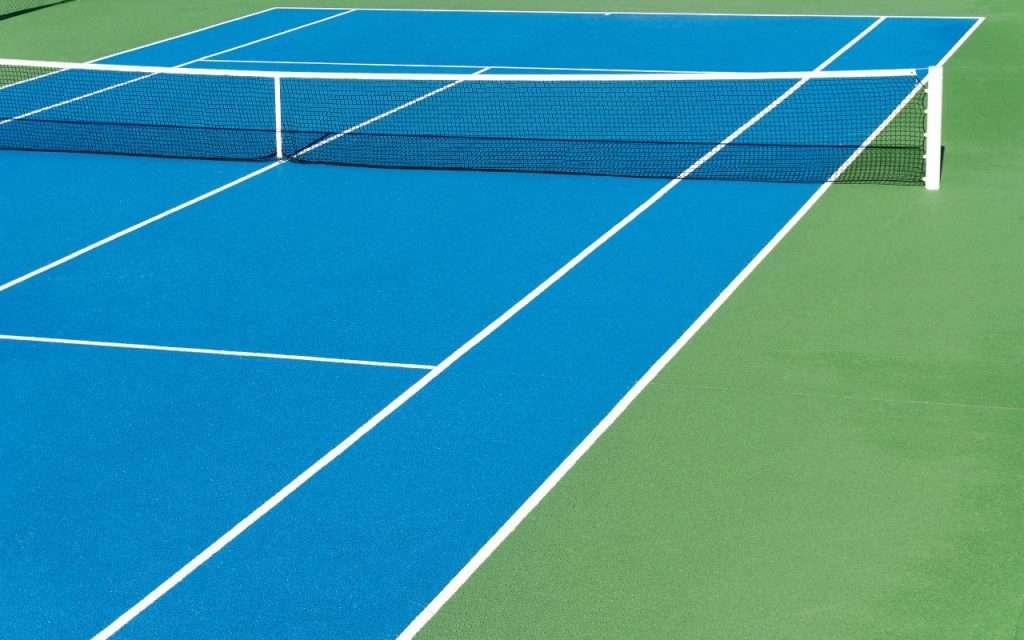
Hard courts are made of asphalt or concrete bases, often covered with an acrylic surface layer. They’re faster than clay but not as fast as grass courts. They’re the most common type of courts found at parks, recreation centers, and clubs.
Hard courts are all-around courts. It’s much easier to control the ball because it’s quite predictable on the bounces. In modern tennis games, it’s ideal for most players to perform all different kinds of strokes and spins.
The US Open and the Australian Open are the only two Grand Slam tournaments that use a hard court surface.
Pros:
- Low maintenance
- Choices of surface colors
- Cleaner to play on
- Dynamic game paces
- Best for multi-sport courts
- Suitable for both indoor and outdoor courts
- Best for all climates.
- Drain and dry off quickly
Cons:
- Stress on knees/back
- No sliding during the play
- Hot surface
Carpet and Synthetic Courts
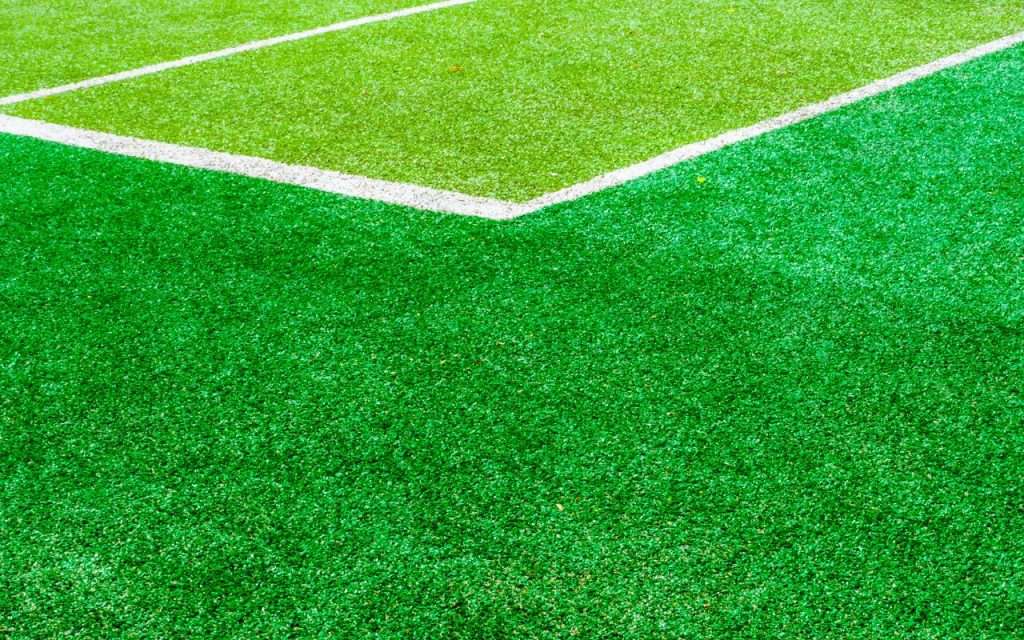
Carpet, in tennis, refers to any removable court covering. These can be made from any of several materials, from artificial turf to hard rubber. In general, carpeted courts make for a fast game
On these courts, the ball bounces fast and low, much like real grass courts. Carpet courts have been banned from professional tournaments by the ATP (Association of Tennis Professionals) since 2009.
Pros:
- Low cost
- Sliding during the play
- Ideal as a modular or temporary surface
- Works both indoors and outdoors
Cons:
- Difficult to install
- Slippery to play on when wet
Tennis Court Surfaces Comparison
| Types of Courts | Materials | Speed | High/Low Bounce | Sliding During Play | Maintenance | Cost to Install | Stress on Knees/Back | Tournaments |
| Grass | Short-cutter grass on hard-packed soil | Fast | Low | Yes | High | High | Easy | Wimbledon |
| Clay | Crushed shale or brick | Slow | High | Yes | High | High | Medium | Roland Garros |
| Hard | Asphalt base with acrylic coating | Medium – Fast | High | No | Low | Medium | Hard | Australian Open/US Open |
| Synthetic | Artificial materials covering | Fast | Low | Yes | Medium | Low | Medium | None |
Tennis Court Dimension
The dimensions of a tennis court are defined and regulated by the International Tennis Federation (ITF) governing body and are written down in the annual ‘Rules of Tennis’ document.
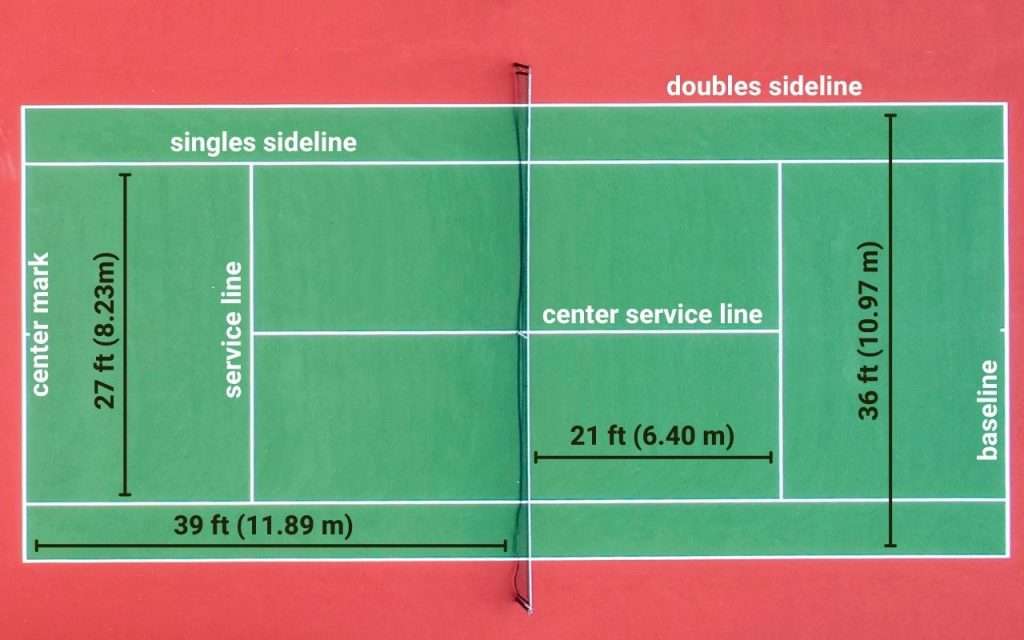
The court is 78 ft (23.77 m) long. Its width is 27 ft (8.23 m) for singles matches and 36 ft (10.97 m) for doubles matches.
The service line is 21 ft (6.40 m) from the net. Additional clear space around the court is needed in order for players to reach overrun balls for a total of 60 ft (18 m) wide and 120 ft (37 m) long.
A net is stretched across the full width of the court, parallel with the baselines, dividing it into two equal ends. The net is 3 ft 6 in (1.07 m) high at the posts, and 3 ft (0.914 m) high in the center.
The net posts are 3 ft (0.914 m) outside the doubles court on each side or, for a singles net, 3 ft (0.914 m) outside the singles court on each side.
Based on the standard rules of tennis, the size of the court is measured to the outside of the respective baselines and sidelines.
For more details on the tennis court dimensions, please check the PDF document “Rules of Tennis” from the ITF official site.
What’s Next
Tennis is a wonderful sport with a variety of different court surfaces. Each surface can be played and enjoyed in its own way. Hopefully, you will get to know all the details of the types of tennis courts, if you have any questions feel free to reach out.
